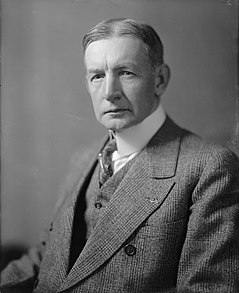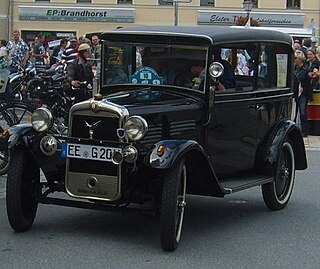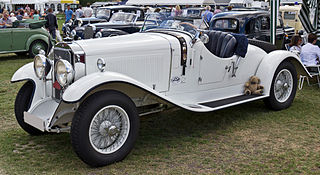The Brennabor Typ Z, launched in 1928, was a car introduced by the Brennabor company, replacing the Brennabor Typ R, as the company’s contender in the medium-sized car sector, had been a best seller on the German market during the modest return to economic growth that characterized the middle years of the decade after the reparations issue had, to an extent, been resolved. The Typ Z was itself replaced after just a year by Brennabor Ideal Typ N which would represent a more comprehensive upgrade

Brennabor-Werke AG was a German manufacturer of infant buggies, bicycles, motorcycles and, for two decades, of powered motor vehicles. It was based in Brandenburg an der Havel and operated between 1871 and 1945.

The Dawes Plan was a plan that was in 1924 to resolve the World War I reparations that Germany had to pay, that had strained diplomacy following World War I and the Treaty of Versailles.
The Typ Z retained the same engine capacity and claimed 25 hp (19 kW) power output of its predecessor, but was slightly shorter and lower (though wider and no lighter). The rear axle was now provided with underslung half leaf springs, a system which would later be adopted by the competing auto-maker Horch for luxury models such as the Horch 850.
Horch[hɔʁç] was a car brand manufactured in Germany by August Horch & Cie, at the beginning of the 20th century.
The Brennabor Typ Z was offered with a range of body types, with two or four doors and as a sedan or open-topped sedan. A two-door full cabriolet was also available. Approximately 10,000 were produced.
This page is based on this
Wikipedia article Text is available under the
CC BY-SA 4.0 license; additional terms may apply.
Images, videos and audio are available under their respective licenses.

Auto Union AG, Chemnitz, was an amalgamation of four German automobile manufacturers, founded in 1932 and established in 1936 in Chemnitz, Saxony. It is the immediate predecessor of Audi as it is known today.

Wanderer [ˈvandəʀɐ] was a German manufacturer of bicycles, motorcycles, automobiles, vans and other machinery. Established as Winklhofer & Jaenicke in 1896 by Johann Baptist Winklhofer and Richard Adolf Jaenicke, the company used the Wanderer brand name from 1911, making civilian automobiles until 1941 and military vehicles until 1945.

The Daewoo Lacetti is a compact car manufactured and marketed globally by GM Korea since 2002 and now in its third generation.

Neue Automobil-Gesellschaft (NAG) was a German automobile manufacturer in Berlin. In 1915 it was renamed Nationale Automobil-Gesellschaft (NAG).

Initially presented early in 1933, the Audi Front UW 220 was Europe’s first car to combine front-wheel drive with a six-cylinder engine. It remained in production for slightly under two years before being replaced by the Audi Front UW 225 featuring a larger 2.25-litre engine. The larger-engined car introduced in 1935 was built till April 1938 and continued to be listed into 1939. Between 1933 and 1938, the Front was the only Audi in volume production.

The Mercedes-Benz W15 is an automobile produced by Mercedes-Benz from 1931 to 1936. Regarded today as a mid-size family car, it was given the chassis designation W15, and sold as the Typ 170 in four-door "Limousine" (sedan/saloon) and Cabriolet forms.
The Brennabor Typ P, launched in 1919, is the first car introduced by the Brennabor company after the First World War. For a few years in the early 1920s this middle market model, with production reaching 100 units per day just for the domestic market, took the company to the top of the German auto-sales charts.
The Brennabor Typ S, launched in 1922, was a car introduced by the Brennabor company in order to complement their larger Typ P model. In 1925 it was replaced by the Brennabor Typ R which was essentially an updated version of the same model.
In 1929 the Brennabor Ideal Typ N was introduced by the Brennabor company, which for much of that decade had been Germany's leading auto maker.
Brennabor Typ A was the designation given to a six-cylinder car introduced by the Brennabor company in 1927. Successive versions appeared in subsequent years until the Typ As were replaced, by the Brennabor Juwel 6, for 1930.
The Brennabor Typ B “Juwel 6” is a six-cylinder automobile introduced by the Brennabor company in 1929 as a successor to the des Brennabor Typ A.
The Brennabor Juwel 8 is an eight-cylinder automobile introduced the Brennabor company in 1930 to complement their then recently introduced Juwel 6 model.

The 1 Litre Brennabor Typ C is a small car introduced by Brennabor in 1931. In the wake of a sustained period of economic difficulties it represented a belated extension of the company’s range into the "small car" sector which hitherto Brennabor had ignored. In 1933 the car was upgraded and became the short-lived Brennabor Typ D
The 2 Litre Brennabor Typ E is a car manufactured, briefly, by Brennabor in 1933 as a successor to the company’s Typ B “Juwel 6.

The Audi Type P was a small two-door sedan/saloon car introduced by Audi in 1931. It was discontinued by 1932.

The Mercedes-Benz Nürburg 460 was introduced in Autumn 1928, Mercedes-Benz's first eight-cylinder passenger car. Designated model W 08 was by the factory, it remained in production with various modifications and upgrades until the later summer of 1939, the longest lived Mercedes-Benz model of the 1920s and 1930s.

The Mercedes 24/100/140 PS was a large luxury car introduced by Daimler of Untertürkheim in 1924. Production continued until 1929 by which time Daimler had merged with Benz & Cie as a result of which the car’s name had changed to Mercedes-Benz Typ 630. The car was conceptually and structurally similar to the contemporary Mercedes 15/70/100 PS, but the Mercedes 24/100/140 PS was longer, heavier, more powerful, faster and even more expensive.
The Mercedes-Benz W03 was a large six-cylinder-engined automobile introduced as the Mercedes-Benz 12/55 PS and, initially, as the Mercedes-Benz Typ 300, by Daimler-Benz at the Berlin Motor Show in October 1926. It was developed in some haste under the manufacturer’s Technical Director, Ferdinand Porsche in parallel with the smaller Mercedes-Benz W 01 and the two-litre-engined Mercedes-Benz W02 following the creation of Daimler-Benz, formally in July 1926, from the fusion of the Daimler and Benz & Cie auto-businesses.












